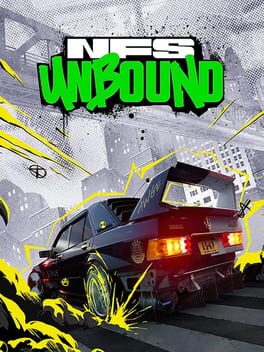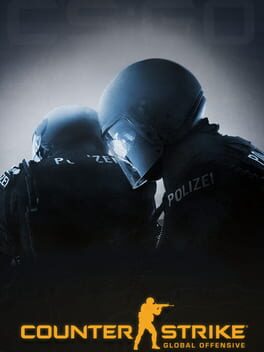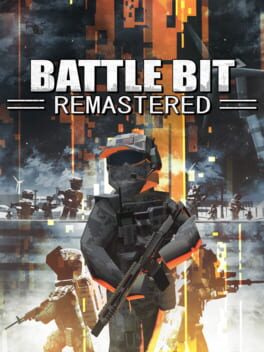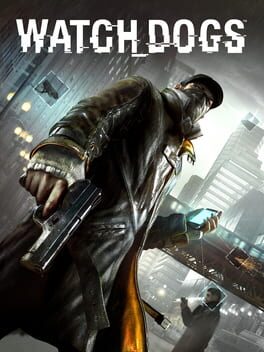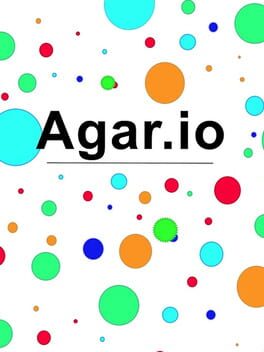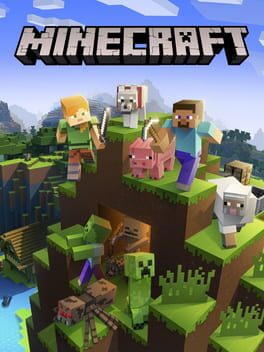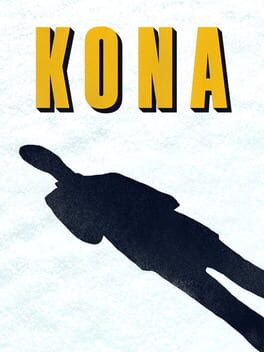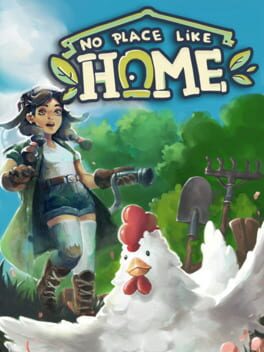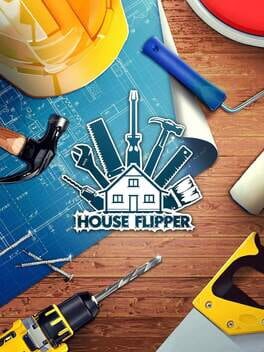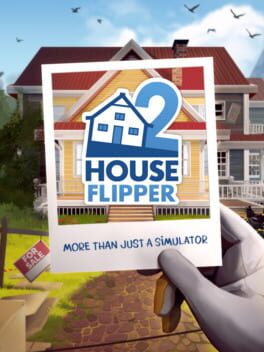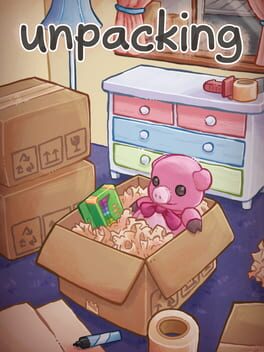65 reviews liked by chlebak
I don't even know where to begin. I did not have unrealistic, nor high, expectations for this game. I'm a big fan of the arcade racing genre, and a cool art style or setting are all that I need to enjoy these games. I don't expect a grand narrative or groundbreaking gameplay. Get the physics right, give me some cool car customization, and give me a soundtrack that treats the game like a time capsule for its release year. That's it. How Electronic Arts was able to fumble this is beyond me. NFS Unbound in concept sounds like a great game. Tuning focused underground racing scene with JDM and American Muscle as your introduction, with a soundtrack advertised to be in line with Rockstar's Midnight Club series. But EA takes a really great premise and just butchers it.
The arcade racing physics are passable. The cars on straightaways and super tight chicane turns feel solid, but any other variety of the racetrack and the cars begin to feel bulky while simultaneously giving no feeling of actual weight when shifting. At first I just thought "okay I'm washed". It was a me problem. It had been a while since I had last played a racing game. But then I decided to go back to some old favorites. Wreckfest and Dirt Rally first, but I thought that they're closer to simulators than arcade racers. But then I played NFS Most Wanted on my Vita. EA could have copy and pasted the physics from their 2012 release and I would have been more satisfied gameplay wise compared to what was given in this package. Another jarring element of the game is that after every race, you are forced into a results screen, that breaks up the adrenaline of the race you just had. Then you spam through XP gain and the sort, and you're immediately thrown into a police pursuit. It could be fun if you hadn't just made me wait through a monotonous UI and button spamming skip to continue screen beforehand. It baffles me that in 2022, EA couldn't just give me the information of the race results somewhere else on the screen while I remain in the game world. It makes the open world underutilized and makes me question why this isn't a level based experience.
Now the music. They baited with the promotional videos of this game. I'm a HUGE fan of A$AP Mob. When I heard A$AP Rocky in the trailer, I was hooked. I thought this would be the 2022 equivalent to the Midnight Club: DUB soundtrack. East Coast Hip Hop, Tread Trap, Noise Rap is what I assumed from the trailer. What EA gave me was two good A$AP Mob tracks, some of Rico Nasty's worst work, and maybe a handful of good hip hop/rap tracks from some smaller artists. Aside from that, the majority of the soundtrack can be boiled down to "corporate hype music". You know the type. The kind of unobtrusive and consumer panel tested phonk and what I could only describe as Old Navy ambient-core.
What finally made me put the game down was the story. I can put aside that it isn't the most compelling narrative. There isnt much you can do with a racing game story. You start off with a beater and you become the best racer in your city. There is some variation over other games, but they can usually be reduced to that. My problem, is with how LAUGHABLY BAD the dialogue is between characters. If EA wants to cater to the younger demographic that this game is clearly targeting, they cant keep letting their 38 year old writers role play as what they assume cool highschool seniors sound like nowadays. Overuse of super annoying acronyms that no one uses anymore. Every 30 seconds required a sassy quip a la Marvel. And what is with millennial writers thinking that you can make any sentence sound "hip", no matter how robotic and overly academic they make it, just by adding "bruh" at the end. And the best part of all of this peak storytelling is that it genuinely happens maybe every 30 seconds to a minute, and it practically mutes the music, and engine sounds. Great idea to not only annoy the player, but make sure that the sound design that immerses one in these types of games is inaccessible during a good portion of the game.
With everything wrong that I just mentioned, along with a pretty boring open world map that just lacks personality even when free roaming, it pains me that this wasn't enjoyable. This genre and the theme that was chosen for NFS Unbound CAN be good. I also believe AAA game CAN be good. But it's games like this that have jaded consumers and created a sense of apathy towards projects from these larger publishers. This just feels board room tested.
I'll probably dive back in with due time to try the multiplayer, because from reviews and videos I've seen, this is where you get the turn your brain off game play loop that EA is hoping will stick.
The arcade racing physics are passable. The cars on straightaways and super tight chicane turns feel solid, but any other variety of the racetrack and the cars begin to feel bulky while simultaneously giving no feeling of actual weight when shifting. At first I just thought "okay I'm washed". It was a me problem. It had been a while since I had last played a racing game. But then I decided to go back to some old favorites. Wreckfest and Dirt Rally first, but I thought that they're closer to simulators than arcade racers. But then I played NFS Most Wanted on my Vita. EA could have copy and pasted the physics from their 2012 release and I would have been more satisfied gameplay wise compared to what was given in this package. Another jarring element of the game is that after every race, you are forced into a results screen, that breaks up the adrenaline of the race you just had. Then you spam through XP gain and the sort, and you're immediately thrown into a police pursuit. It could be fun if you hadn't just made me wait through a monotonous UI and button spamming skip to continue screen beforehand. It baffles me that in 2022, EA couldn't just give me the information of the race results somewhere else on the screen while I remain in the game world. It makes the open world underutilized and makes me question why this isn't a level based experience.
Now the music. They baited with the promotional videos of this game. I'm a HUGE fan of A$AP Mob. When I heard A$AP Rocky in the trailer, I was hooked. I thought this would be the 2022 equivalent to the Midnight Club: DUB soundtrack. East Coast Hip Hop, Tread Trap, Noise Rap is what I assumed from the trailer. What EA gave me was two good A$AP Mob tracks, some of Rico Nasty's worst work, and maybe a handful of good hip hop/rap tracks from some smaller artists. Aside from that, the majority of the soundtrack can be boiled down to "corporate hype music". You know the type. The kind of unobtrusive and consumer panel tested phonk and what I could only describe as Old Navy ambient-core.
What finally made me put the game down was the story. I can put aside that it isn't the most compelling narrative. There isnt much you can do with a racing game story. You start off with a beater and you become the best racer in your city. There is some variation over other games, but they can usually be reduced to that. My problem, is with how LAUGHABLY BAD the dialogue is between characters. If EA wants to cater to the younger demographic that this game is clearly targeting, they cant keep letting their 38 year old writers role play as what they assume cool highschool seniors sound like nowadays. Overuse of super annoying acronyms that no one uses anymore. Every 30 seconds required a sassy quip a la Marvel. And what is with millennial writers thinking that you can make any sentence sound "hip", no matter how robotic and overly academic they make it, just by adding "bruh" at the end. And the best part of all of this peak storytelling is that it genuinely happens maybe every 30 seconds to a minute, and it practically mutes the music, and engine sounds. Great idea to not only annoy the player, but make sure that the sound design that immerses one in these types of games is inaccessible during a good portion of the game.
With everything wrong that I just mentioned, along with a pretty boring open world map that just lacks personality even when free roaming, it pains me that this wasn't enjoyable. This genre and the theme that was chosen for NFS Unbound CAN be good. I also believe AAA game CAN be good. But it's games like this that have jaded consumers and created a sense of apathy towards projects from these larger publishers. This just feels board room tested.
I'll probably dive back in with due time to try the multiplayer, because from reviews and videos I've seen, this is where you get the turn your brain off game play loop that EA is hoping will stick.
BattleBit Remastered
2023
It's just a really solid shooter, which I can hop onto solo or with a friend whenever I want to. Battlefield games may have more immersion and "epic gamer moments," but this game takes up only 2 GB of my disc in comparison to 50+ GB of BF4 or BF5, so it's an obvious choice for me when I want to casually blast some people.
Just remember that not a lot of people use voice chat anymore and the updates are very lacklustre for an early access title, so the playerbase may go dead sooner than I would like to :(
Just remember that not a lot of people use voice chat anymore and the updates are very lacklustre for an early access title, so the playerbase may go dead sooner than I would like to :(
Resident Evil 2
2019
Watch Dogs
2014
Hotline Miami
2012
Agar.io
2015
Minecraft
2011
Maturing is realising that Minecraft is the most important game you will ever play in your life. All the friends you met, lost, and those who stayed with you,
the joy of exploring your first world,
watching creepypastas on YouTube and not being able to sleep peacefully because of them,
your every creation lost forever to time because of your disc corrupting or your favourite server's closure...
made us who we are today.
It's a digitised childhood for a generation of people, and I am proud to be one of them.
the joy of exploring your first world,
watching creepypastas on YouTube and not being able to sleep peacefully because of them,
your every creation lost forever to time because of your disc corrupting or your favourite server's closure...
made us who we are today.
It's a digitised childhood for a generation of people, and I am proud to be one of them.
I really enjoyed the first game. While far from perfect, it still managed to tell an interesting story with a fleshed out protagonist and used the medium of video games (the pattern puzzles, the binaural audio, the combat) to elevate said story. At the same time, I was surprised upon learning of the devs’ plan to continue Senua’s ‘saga’ in a sequel. I thought the journey she took in that first game was a full experience and didn’t require any further development. Whether it was a creative or a business decision to turn Hellblade into a franchise, I guess we’ll never truly know (although I have my thoughts).
To get the obvious out of the way - yes, the game looks absolutely spectacular. The character models and animations, especially facial, are on par with the best in the industry (thinking mostly of Naughty Dog’s work). This is supported by stellar acting, with a much bigger cast this time. The island vistas are stunning and I’m grateful that the art department decided to include colors other than brown and gray. Many times I found myself looking around and truly admiring Ninja Theory’s work in the graphical department. The devs are well aware of all this and they’re eager to show it off, and good for them. However, I still lament the decision to limit the game to 30fps for a ‘cinematic experience’. I don’t think I’m the only player to suspect that the devs simply didn’t manage to make the game run at a stable 60fps and opted for this excuse instead. Honestly, after the first 30 minutes or so it stopped bothering me too much and I forgot that I was only looking at 30 frames instead of the preferred 60. What I couldn’t let go of, however, is the frustration at the black bars visible on top and bottom of the screen throughout the whole game. Look, we’ve been there before - just look at the backlash to the same decision in ‘The Evil Within’ - and I still think it only hinders players from immersing themselves in the game. I’m certain there will be an appropriate mod available on PC, but as an Xbox player I was unfortunately forced to play with a significant portion of the screen covered in black.
Gameplay wise, the original Hellblade was never exceptional. As I mentioned earlier, it served the narrative well, but the simple and repetitive combat and overreliance on very similar environmental puzzles dragged the game down in my opinion. Well, for whatever reason, the gameplay in the sequel feels even more dumbed down. The puzzles where you look for patterns around you are largely gone, although they’re to some extent replaced by an entirely optional mechanic where you search for faces hidden in boulders - an addition I was happy with, as it is very much in line with the narrative aspect and also it kept me looking around the levels throughout the whole game without being too frustrating. The main puzzle segments utilize a very simple idea of interacting with an orb that switches between two versions of the level, e.g. you want to cross a river - you interact with the orb, a bridge appears, but then you need to interact with it again to get rid of the next obstacle, but then the bridge disappears. It’s very simple and unfortunately the devs didn’t make much out of it. Other than one singular instance when I had to actually think about the layout of the level to solve the puzzle, the rest were extremely simple exercises in going between points of interest and ‘focusing’ on the orb. I feel like there could’ve been so much more done to have the players flex their mental muscles, but it feels like the devs weren’t even trying to come up with anything more complex or interesting. Plus, the voices again give out hints way too quickly - please stop forcing puzzle hints on players in AAA games, thank you.
The combat feels at the same time more spectacular and clunkier. The fighting segments are well-directed and the number of unique animations employed during those is staggering. It’s even a greater shame, then, that the combat system has not evolved even by a bit - it’s still very simplistic, only this time I somehow struggled to get the timing right on the parry. I felt like there was no rule to when it worked and when it didn’t, so after a couple of hours I mostly stuck to the roll instead. In the first game, Senua often had to manage multiple enemies at once with the voices inside her head helping her out to make it out alive. These were some of the best moments in the original game, at least combat-wise. Here you always fight one on one, which deducts this crowd management aspect, unfortunately. At least the combat sections are less frequent in the sequel.
Additionally, there is quite a lot of downtime between the puzzles and the combat. There are long sections of simply pressing the left stick up and pressing L1 to have Senua walk a little bit faster, as nothing is going on around you. Sure, you can appreciate the graphics, but there’s not much else, including almost non-existent environmental storytelling. This reflects a bigger issue with pacing that the game indubitably has. Lastly, there are hardly any standout moments like in the first game, where you had to run between sources of light to escape a ‘dragon’ or fleeing from a fire ghost in a wooden maze. It all feels very flat and bland.
But the biggest gripe I’ve got with the game is the narrative. After all, that was the main draw of the first game and the story was so well-told that many players were eagerly looking forward to reuniting with Senua. I’m sad to say that this is probably the weakest point of the sequel.
[SPOILERS]
The first couple of hours are basically a regurgitation of the first game. Senua is on a literal guilt trip and the devs revel in her misery, pushing the game dangerously close to torture porn. The voices are still there to sometimes induce anxiety in Senua and sometimes to take her side, her father’s shadow is still harassing her, she’s still overcome with guilt over Dillion’s death. What was the whole first game for, then? It really feels like at the beginning of the sequel Senua is in the very same place that she was in the early hours of the original story. As if she didn’t learn anything. It’s a major letdown and, honestly, a baffling narrative decision.
I think it was the right call to have Senua interact with other characters. I’m not sure whether the game would’ve been able to tell anything new if it had only kept to Senua and her voices (which add a lot less this time around and honestly feel like a gimmick - they were there in the first game and that’s what people recognize the IP with, so gotta keep them, I guess!). The small cast of characters is interesting enough, however apart from the slaver we hardly see any development from them. I would’ve loved to have been given more opportunities to interact with these NPCs, to learn more about the stories, to even go on some quests together. But as they are now, they are mostly exposition machines that entertain the player while walking slowly and having nothing better to do. The abovementioned slaver’s story is akin to Senua’s in many ways, with his father issues and the impact of religion on this island community - more could’ve been done, having that character paired with Senua. The protagonist is also at one point close to finding something of a kindred spirit, and it’s only natural for her to search for someone like that - I wish this is where the game started and progressed from there, instead of basically ending right after Senua receives the chance to meet someone she could perhaps confide in.
I also don’t think it’s a bad idea to have Senua become a kind of ghost (or giant) whisperer, where through her ordeal she learned to help tortured souls and lay them to rest. That could’ve easily been the whole game with plenty of potential to include moving, ambitious stories on par with what was expected from Ninja Theory after the release of the first Hellblade. But this idea is squandered on opting for spectacle rather than narrative coherence. There’s so much talk about learning the names of the people turned into giants, but instead of delving deeper into their tragedies the game would rather focus on a flashy scene where a bunch of characters are throwing flaming spears at the giant’s head.
I was also disappointed with the ending. The game pulls the same trick that it did in the first one, i.e. all of the supernatural elements turn out to be figments of Senua’s imagination, or rather the result of her schizophrenia. Why are the other characters shown fighting with the giants, then? Is it also all in Senua’s mind? Did she make up the NPCs, or are they also sick? Is the leader of the tribe even real? Does her decision in the end have any significance? I’d love to learn about all that, but perhaps I’ll have to wait for some video essays or something, because I don’t think I can take playing the game again.
To get the obvious out of the way - yes, the game looks absolutely spectacular. The character models and animations, especially facial, are on par with the best in the industry (thinking mostly of Naughty Dog’s work). This is supported by stellar acting, with a much bigger cast this time. The island vistas are stunning and I’m grateful that the art department decided to include colors other than brown and gray. Many times I found myself looking around and truly admiring Ninja Theory’s work in the graphical department. The devs are well aware of all this and they’re eager to show it off, and good for them. However, I still lament the decision to limit the game to 30fps for a ‘cinematic experience’. I don’t think I’m the only player to suspect that the devs simply didn’t manage to make the game run at a stable 60fps and opted for this excuse instead. Honestly, after the first 30 minutes or so it stopped bothering me too much and I forgot that I was only looking at 30 frames instead of the preferred 60. What I couldn’t let go of, however, is the frustration at the black bars visible on top and bottom of the screen throughout the whole game. Look, we’ve been there before - just look at the backlash to the same decision in ‘The Evil Within’ - and I still think it only hinders players from immersing themselves in the game. I’m certain there will be an appropriate mod available on PC, but as an Xbox player I was unfortunately forced to play with a significant portion of the screen covered in black.
Gameplay wise, the original Hellblade was never exceptional. As I mentioned earlier, it served the narrative well, but the simple and repetitive combat and overreliance on very similar environmental puzzles dragged the game down in my opinion. Well, for whatever reason, the gameplay in the sequel feels even more dumbed down. The puzzles where you look for patterns around you are largely gone, although they’re to some extent replaced by an entirely optional mechanic where you search for faces hidden in boulders - an addition I was happy with, as it is very much in line with the narrative aspect and also it kept me looking around the levels throughout the whole game without being too frustrating. The main puzzle segments utilize a very simple idea of interacting with an orb that switches between two versions of the level, e.g. you want to cross a river - you interact with the orb, a bridge appears, but then you need to interact with it again to get rid of the next obstacle, but then the bridge disappears. It’s very simple and unfortunately the devs didn’t make much out of it. Other than one singular instance when I had to actually think about the layout of the level to solve the puzzle, the rest were extremely simple exercises in going between points of interest and ‘focusing’ on the orb. I feel like there could’ve been so much more done to have the players flex their mental muscles, but it feels like the devs weren’t even trying to come up with anything more complex or interesting. Plus, the voices again give out hints way too quickly - please stop forcing puzzle hints on players in AAA games, thank you.
The combat feels at the same time more spectacular and clunkier. The fighting segments are well-directed and the number of unique animations employed during those is staggering. It’s even a greater shame, then, that the combat system has not evolved even by a bit - it’s still very simplistic, only this time I somehow struggled to get the timing right on the parry. I felt like there was no rule to when it worked and when it didn’t, so after a couple of hours I mostly stuck to the roll instead. In the first game, Senua often had to manage multiple enemies at once with the voices inside her head helping her out to make it out alive. These were some of the best moments in the original game, at least combat-wise. Here you always fight one on one, which deducts this crowd management aspect, unfortunately. At least the combat sections are less frequent in the sequel.
Additionally, there is quite a lot of downtime between the puzzles and the combat. There are long sections of simply pressing the left stick up and pressing L1 to have Senua walk a little bit faster, as nothing is going on around you. Sure, you can appreciate the graphics, but there’s not much else, including almost non-existent environmental storytelling. This reflects a bigger issue with pacing that the game indubitably has. Lastly, there are hardly any standout moments like in the first game, where you had to run between sources of light to escape a ‘dragon’ or fleeing from a fire ghost in a wooden maze. It all feels very flat and bland.
But the biggest gripe I’ve got with the game is the narrative. After all, that was the main draw of the first game and the story was so well-told that many players were eagerly looking forward to reuniting with Senua. I’m sad to say that this is probably the weakest point of the sequel.
[SPOILERS]
The first couple of hours are basically a regurgitation of the first game. Senua is on a literal guilt trip and the devs revel in her misery, pushing the game dangerously close to torture porn. The voices are still there to sometimes induce anxiety in Senua and sometimes to take her side, her father’s shadow is still harassing her, she’s still overcome with guilt over Dillion’s death. What was the whole first game for, then? It really feels like at the beginning of the sequel Senua is in the very same place that she was in the early hours of the original story. As if she didn’t learn anything. It’s a major letdown and, honestly, a baffling narrative decision.
I think it was the right call to have Senua interact with other characters. I’m not sure whether the game would’ve been able to tell anything new if it had only kept to Senua and her voices (which add a lot less this time around and honestly feel like a gimmick - they were there in the first game and that’s what people recognize the IP with, so gotta keep them, I guess!). The small cast of characters is interesting enough, however apart from the slaver we hardly see any development from them. I would’ve loved to have been given more opportunities to interact with these NPCs, to learn more about the stories, to even go on some quests together. But as they are now, they are mostly exposition machines that entertain the player while walking slowly and having nothing better to do. The abovementioned slaver’s story is akin to Senua’s in many ways, with his father issues and the impact of religion on this island community - more could’ve been done, having that character paired with Senua. The protagonist is also at one point close to finding something of a kindred spirit, and it’s only natural for her to search for someone like that - I wish this is where the game started and progressed from there, instead of basically ending right after Senua receives the chance to meet someone she could perhaps confide in.
I also don’t think it’s a bad idea to have Senua become a kind of ghost (or giant) whisperer, where through her ordeal she learned to help tortured souls and lay them to rest. That could’ve easily been the whole game with plenty of potential to include moving, ambitious stories on par with what was expected from Ninja Theory after the release of the first Hellblade. But this idea is squandered on opting for spectacle rather than narrative coherence. There’s so much talk about learning the names of the people turned into giants, but instead of delving deeper into their tragedies the game would rather focus on a flashy scene where a bunch of characters are throwing flaming spears at the giant’s head.
I was also disappointed with the ending. The game pulls the same trick that it did in the first one, i.e. all of the supernatural elements turn out to be figments of Senua’s imagination, or rather the result of her schizophrenia. Why are the other characters shown fighting with the giants, then? Is it also all in Senua’s mind? Did she make up the NPCs, or are they also sick? Is the leader of the tribe even real? Does her decision in the end have any significance? I’d love to learn about all that, but perhaps I’ll have to wait for some video essays or something, because I don’t think I can take playing the game again.
Kona
2017
I absolutely adore the idea behind “Kona” - an open world detective game where you explore at your own pace and gather tidbits of information scattered all over the map to uncover the truth behind the mysterious disappearance of inhabitants of a rural, snow-covered town in French Canada. It’s basically a walking sim with plenty of space to walk around (thankfully there are two vehicles at your disposal, as the distances between points of interest can be significant).
In the beginning the game deftly builds the atmosphere (not gonna lie, I’m a sucker for winter levels) and provides enough information to the player to engage him in the mystery. The freedom to drive around the whole map in search of next clues feels really invigorating - most detective games push you into small areas and make you interact with every relevant pixel before letting you through to the next, similarly built area. In “Kona” most notes/areas are skippable and it only depends on your investment in the game how much you’re going to uncover. That is, before the ridiculous ending spells everything out for you. And the final “battle” is utterly atrocious and laughable, it boggles my mind why the devs decided to go there.
There are many odd gameplay choices found in “Kona”. You’re required to pay attention to a bunch of stats like health or mental state like you’re playing some sort of a survival game, which is a nuisance and doesn’t help immerse yourself in the world (I guess that was the idea?). You have some weapons, including firearms, at your disposal, although combat sections are almost non-existent and the actual shooting is done poorly. Your inventory capacity is limited, which again begs the question - why were the devs trying to turn this narrative driven detective game into a survival game? Also, the inventory UI isn’t very user-friendly and is a chore to navigate. Unlike many walking sims, you actually encounter an NPC here, although you’re not really able to interact with them. Like, you can’t even ask him what the hell is happening in this town. Why have him there in the first place, then?
All of these issues were annoying to say the least, but the element that ruined the experience for me was the narrator. Throughout the whole story you will be hearing this monotone voice-over explaining every little detail of what you are witnessing. This is such a baffling decision - the whole point of a game like this, i.e. one where you explore and find notes/items and learn through environmental storytelling, is the opportunity to recreate the story on your own, finding joy in peeling away the layers of the mystery bit by bit. The developers decided to take that away from the players and have some bored old guy explain everything to you in the plainest of terms.
In the beginning the game deftly builds the atmosphere (not gonna lie, I’m a sucker for winter levels) and provides enough information to the player to engage him in the mystery. The freedom to drive around the whole map in search of next clues feels really invigorating - most detective games push you into small areas and make you interact with every relevant pixel before letting you through to the next, similarly built area. In “Kona” most notes/areas are skippable and it only depends on your investment in the game how much you’re going to uncover. That is, before the ridiculous ending spells everything out for you. And the final “battle” is utterly atrocious and laughable, it boggles my mind why the devs decided to go there.
There are many odd gameplay choices found in “Kona”. You’re required to pay attention to a bunch of stats like health or mental state like you’re playing some sort of a survival game, which is a nuisance and doesn’t help immerse yourself in the world (I guess that was the idea?). You have some weapons, including firearms, at your disposal, although combat sections are almost non-existent and the actual shooting is done poorly. Your inventory capacity is limited, which again begs the question - why were the devs trying to turn this narrative driven detective game into a survival game? Also, the inventory UI isn’t very user-friendly and is a chore to navigate. Unlike many walking sims, you actually encounter an NPC here, although you’re not really able to interact with them. Like, you can’t even ask him what the hell is happening in this town. Why have him there in the first place, then?
All of these issues were annoying to say the least, but the element that ruined the experience for me was the narrator. Throughout the whole story you will be hearing this monotone voice-over explaining every little detail of what you are witnessing. This is such a baffling decision - the whole point of a game like this, i.e. one where you explore and find notes/items and learn through environmental storytelling, is the opportunity to recreate the story on your own, finding joy in peeling away the layers of the mystery bit by bit. The developers decided to take that away from the players and have some bored old guy explain everything to you in the plainest of terms.
1 list liked by chlebak
